Somewhat Satisfied with Semi Permanent
Semi Permanent, NZ’s leading design conference (Australian-based actually, but who’s counting?) never fails to inspire and fry the brain a bit.
There are always some highs — thought-provoking speakers — and lows — dry, soft-spoken profile sharers — from the world’s top designers. We’ve decided to focus on the highs: the insightful, fun, honest, entertaining, or enlightening of the group.
Most insightful
Jer Thorpe
Jer’s talk was centred around a simple question: “What is it like to live in data?” Something that we all do, whether we like it or not. It can feel overwhelming with the sense that you don’t have any agent over your data. Basically, it sucks. Buzzwords like big data, and the perceived power it contains, doesn’t make it better.
According to Jer, data is hard to care about. The data you pull from a phone doesn’t make sense to most people, and while it can be useful, it usually isn’t designed with people in mind. He wants to change that by putting people at the centre and create data-driven (art)works that connect with the community. Data can be the engine driving social debate and should be used to design for human wellbeing.
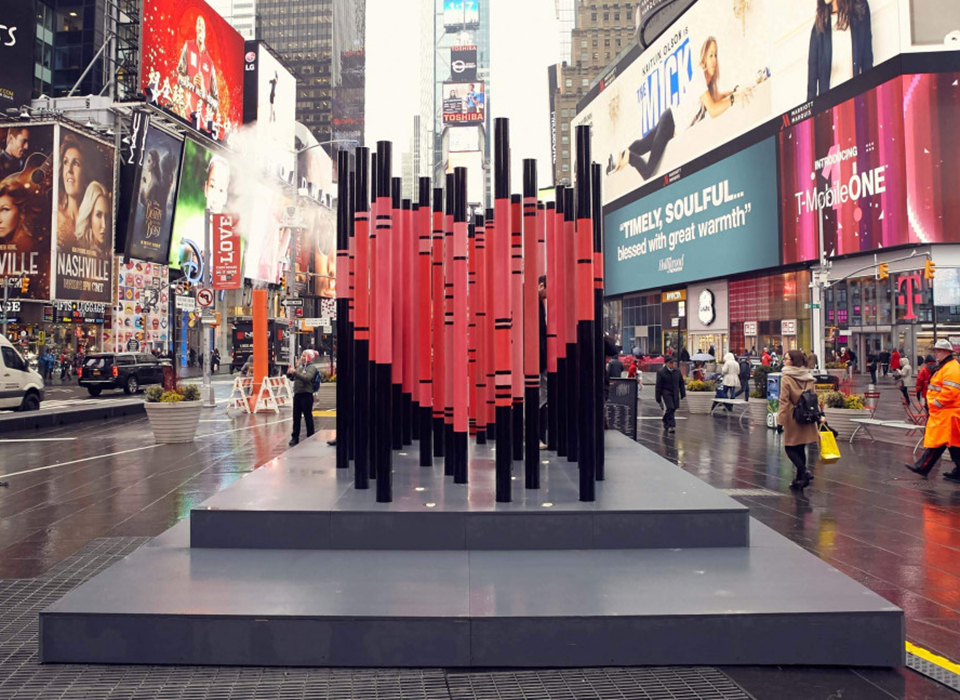
An example of this is the installation at Times Square, where his team mapped the number of immigrants to New York City with pink bars wrapped around vertical poles. The result is a heart-shaped work that, upon closer look, is made out of data bars representing the countries and quantity of immigrants living in New York. This promoted a thought piece, but also interaction, as many who walked through it took a selfie showing the country they had a connection to, emigrated from, or knew someone from.
This interactive, community-based, and data-driven design approach is also reflected in one of Jer’s other projects called Map Rooms. The project originated in the racially divided city of St Louis, Missouri. The team invited community members to mark significant areas on a map. After completion they overlaid historic data from redlining maps, highlighting the consequences and impact of decisions made in the past. By doing so, participants could better understand the background behind significant locations, and recognize differences between neighbourhoods that were apparent down to the condition of the sidewalk.
Jer’s work underlines the power of visualisation, and how data can be made more accessible to the masses and provide real value beyond a complicated looking data point. He concluded his talk with a nice observation that the Te Reo word for data is raraunga, which means data as well as citizenship. This perfectly aligns with Jer’s believe that we should primarily design for human wellbeing. Something we can wholeheartedly agree with.
Nicola Peters
Like Jer, Nicola is driven by human well-being and, in particular, how technology can positively contribute to this.
The main driver in her career and entrepreneurship has been to push empathy and bring love, trust, and compassion to technology. Something that has not always been easy in a male-dominated industry. It is not to say men are not capable of bringing this to the equation, it is just that historically the drivers have been different, and frankly somewhat narcissistic.
Through her agency, not yet found, she brings tomorrow’s technology to companies and consumers. She is known for having a razor-sharp antenna for future proofing. Something global companies like Burberry, Airbnb, and Roborace have hired her for. But it is her entrepreneurship that seems to satisfy her the most. It is where she can truly bridge the gap and bring empathy to tech.
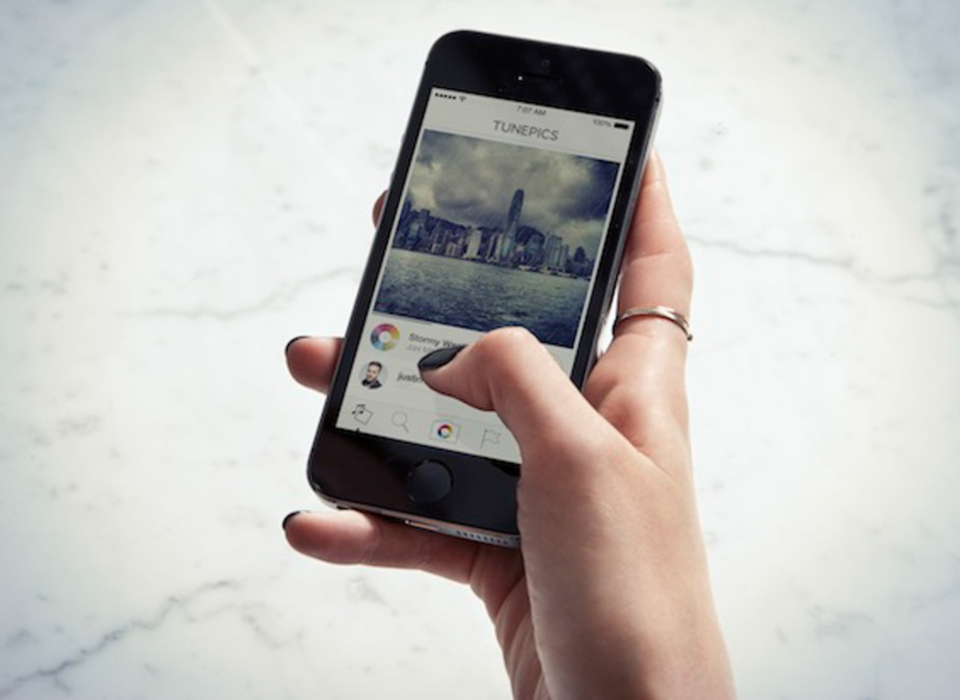
Tunepics was one of the early ventures Nicola was involved with. The app enabled you to share true emotions of your moments by adding tunes to your pictures – creating a social media soundtrack.
Nicola is an interesting and engaging personality, and even though she legally could not tell us anything about her new venture, IDA, you are left with a sense that she is on to something. Some might find her empathy driven approach soft and hard to resonate with; after all, Nicola is not after success but purpose. She represents the Now Age (not New Age) — living with purpose in the moment. And there is plenty of evidence to support this growing attitude as we see the popularity of meditation apps like Headspace, brands looking for social purpose, and investors looking to invest for social impact. Technology will be at the centre of it all, enabling social purpose, not social media.
“The world doesn’t need more successful people” – David W. Ore
Most real
Irma Boom
We could have listened to Irma talk all day. When someone who is passionate about their work, and the work is interesting, you are pulled into the subject and want to know every detail. (Also, Robin’s background in publication design doesn’t hurt.)
Unlike the other speakers, Irma did not bring a digital presentation to be screened. Instead, she stood at a table with a huge selection of her books and an overhead camera showing us a top-down view of each book in her hands.
She bashfully showed off the most interesting books, from intriguing concepts to interesting construction — the subjects of the books were mostly irrelevant. With her eyes glued to the table (a sign of shyness that endeared her to the audience) she talked us through a variety of works, from a print-less embossed book for Chanel that conveyed the ‘very present but not seen’ essence of perfume, to a company history with a hidden message on the binding (2:57 in the video above), to a nearly wordless publication of blocks of colour and pattern that is made to be torn apart at the seams (4:07). Her mantra that ‘you have to be stubborn to get somewhere’ lead to unique printing processes and pushing publishers to their limits.
We certainly fell in love with Irma, her body of work, and refreshing way of presenting in a true down-to-earth Dutch fashion. (Something Caroline can certainly relate to.)
Mike Muller
Was it the best talk ever? No, but he did manage to use his insecurity to his advantage. And at the end of the day, we do remember his talk and message. Like Irma, Mike managed to embrace his fear of public speaking, and by repeatedly going back to this fear, he created a bond with the audience.
Mike’s career started at a young age photographing skateboarders, which through blissful youth and ballsy-ness lead him to shoot bands and make a name for himself. He always wanted to shot action hero movie posters and the big names in Hollywood. It was one of his side projects, photographing street celebrity impersonators in raw settings, that led him to this success. The photo he took of “Batman” smoking crack in a dark alley ended up in his gallery show and ultimately on a wall of Joaquin Phoenix house. It was there that the marketing head of Fox Studios saw a 4×6′ print and the rest is history.
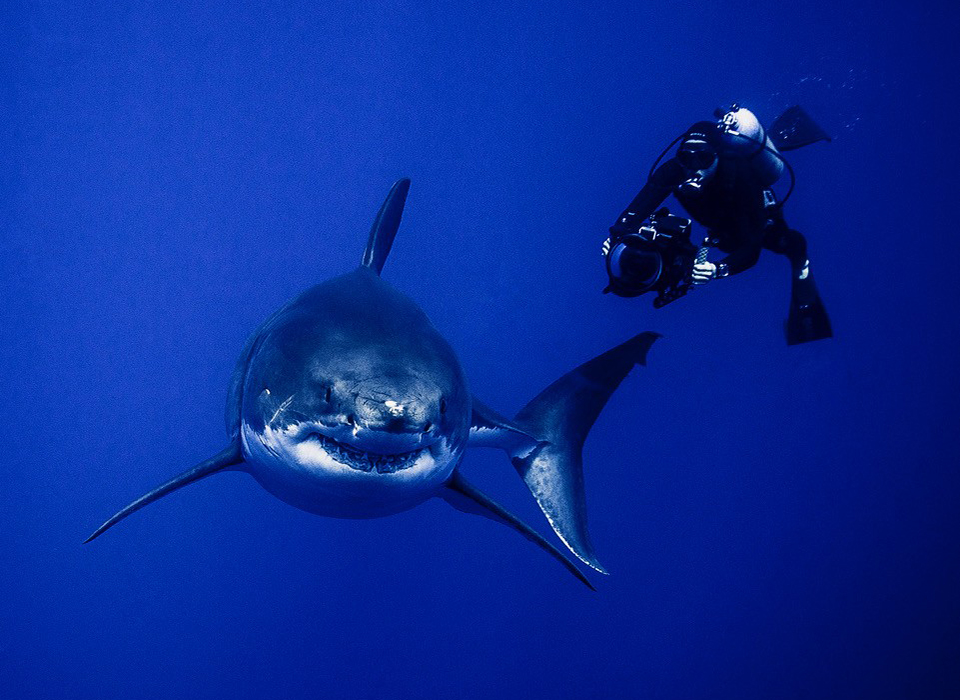
It wouldn’t be the last time a side project ended up directing his career and ambitions. With the latest evidence his passion for sharks. A series of underwater sports and product photography jobs for several different brands exposed him to the wonders of the underwater world. It was in these depths that he not only overcame his fear of sharks but ended up being their biggest advocate. He realised that he could use his talent to expose the injustices of the shark fin trade and celebrate the majestic beast a shark is.
It would send him on a mission to find and ultimately develop the best lighting and underwater camera gear to capture the underwater world, during the day and at night.
As product designers, we can relate to this challenge and highly applaud Mike’s tenaciousness of making it happen. His latest developments have led him into the world of VR, building the first underwater camera that can capture imagery to project a full VR experience in your own living room. The self-funded project, Into the Now, is documenting wildlife in a way that has never been done before. For Mike, it is also a way to continuously overcome his fear, and give back.
“You can only fill your own void if you give back to the world” – Mike Muller
Chip Kidd
While mostly a portfolio piece, Chip wove through the talk the story of his dad’s journey through (and ultimately succumbing to) cancer. This added a deeply personal note to the pieces he was working on through the journey and really showed how he viewed it through the eyes of his grief. It was the first time he shared this story with a bigger audience which added an extra dimension. Quite a powerful start of the conference.
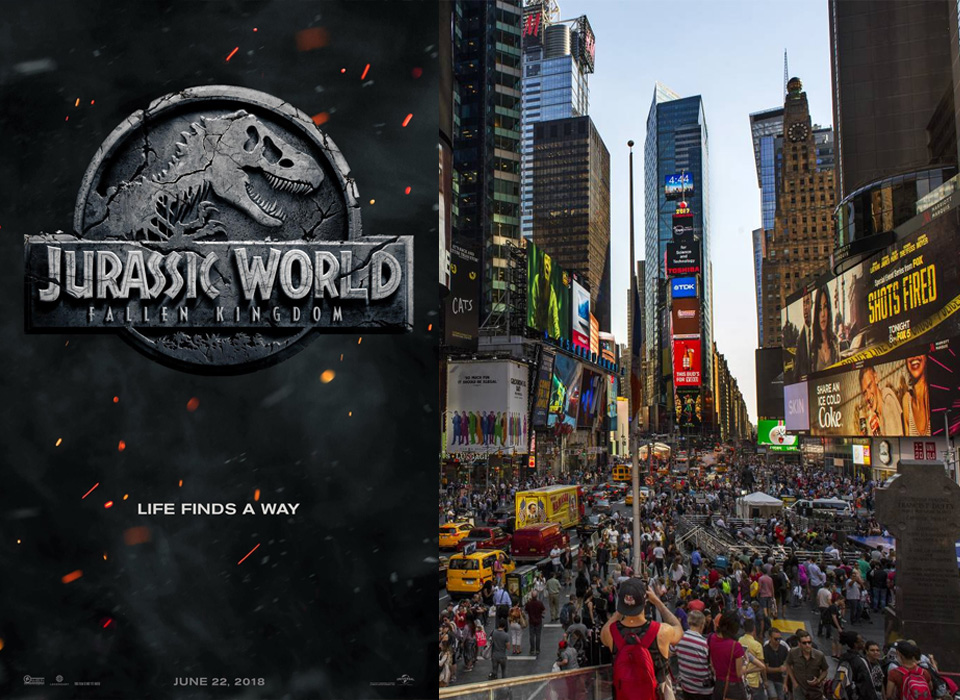
A giant poster was put up for the latest Jurassic Park movie, around the same time his father passed away. It used the original illustration Chip created for the first Jurassic Park series and combined with the title – Life Finds a Way – a pretty fitting closure of a turbulent emotional time.
Fun factor
Of course, not every talk was as heavily loaded as Chip’s. There was some good comic relief by the likes of Javier Jaen, Katsumi Asaba, Irma Boom, and the Semi Permanent opening titles provided by MPC – directed by one of the kiwi speakers.
Javier Jean
Javier Jaen is charming, incredibly talented Spanish designer which work and attitude reminds us of the great Spanish surrealists Dali, Picasso, and Miro. Javier’s work is light in feel and heavy in message. He uses simple fun gestures and projects onto heavy topics, to create meaningful imagery that will stick with you. This contradiction makes you laugh and think at the same time. No wonder New York Times and the likes have him on speed dial.
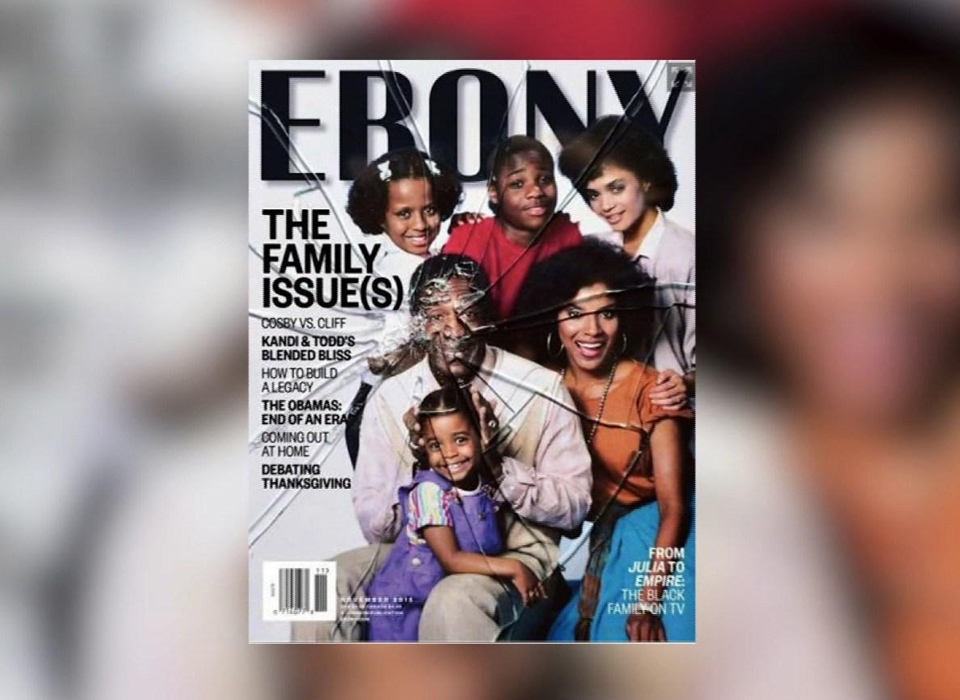
The Cosby cover for Ebony Magazine created a quite a buzz in America. The shattered picture frame glass, perfectly represent the shattered image of Bill Cosby as well as the image of the perfect American family.
Katsumi Asaba
The closing act to the festival was a rather strangely mixed event. Katsumi Asaba is a well renowned Japanese art director known for producing several acclaimed commercials and posters. Well known in Japan, perhaps less so in New Zealand, and we thank Semi Permanent for bringing him into the spotlight and share his work with us.
The talk itself, however, was somewhat gimmicky and awkward. It might have been the translator hiding behind the speakers’ desk trying to not distract from the video, achieving the exact opposite. Or perhaps the somewhat intriguing wood mat performance art of Katsumi himself. Or it could have been Dean Poole from Alt group, who hosted Katsumi, acting like a ping pong ball-boy, serving balls for Katsumi to smash into the audience.
Whatever it was, it did make us laugh and for what we could tell that is something Katsumi likes to bring to his work and life.
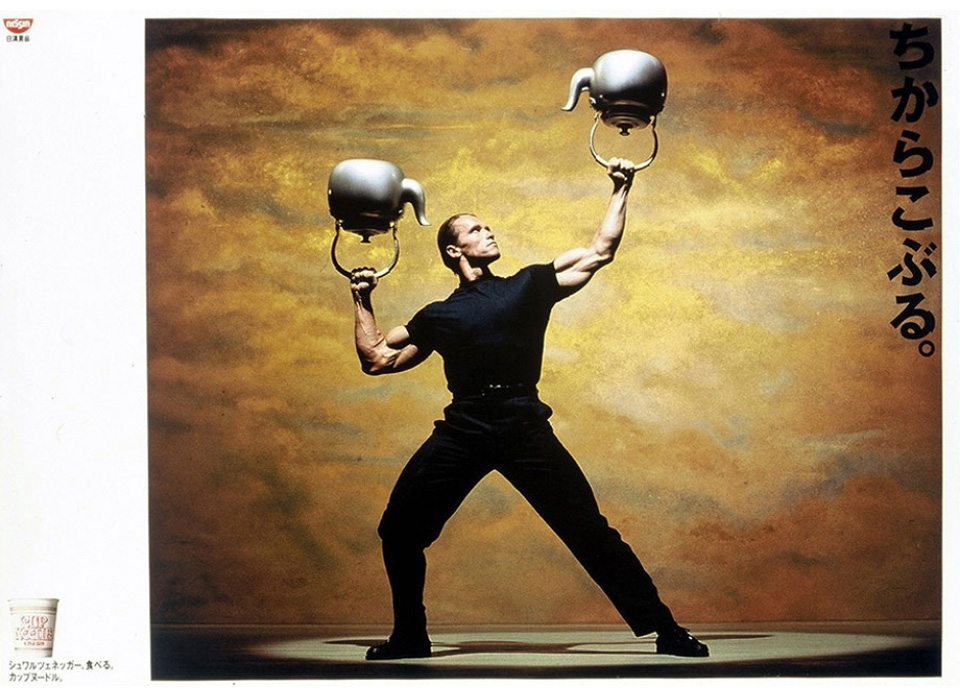
Arnold Schwarzenegger in one of Katsumi’s iconic works for an instant noodle brand. Clearly the makers of “Lost in Translation” knew of Katsumi’s work.
The opening titles
The opening titles were created by MPC, a visual content powerhouse, where two talented Kiwi boys are expressing their creative talent. And although Marc Smith & Alan Bibby didn’t really grasp us with their talk, the opening titles sure did.
The main character(s) is based on a concept character once developed for one of their clients. Back then it didn’t make the cut, but he finally got in the spotlight with them Semi Permanent opening titles. Charming, funny, and lovely in textures. And yes the typeface was probably deliberately chosen to upset the graphic designers in the room 😉
Being exposed to other creative sectors
It is always great to see speakers representing creative areas that are more on the fringe of the obvious creative industries. The two speakers worth mentioning this year are Plan 8 and Kimberly Voll.
Plan8
Plan 8 is a design agency that specialises in music and sound, resulting in great projects that enriched with multiple sensory layers. Sound can play a powerful role and in our everyday visually overloaded world. Great sound design might be the thing that can help cut through.
Plan8’s work for Lyft, using actual car sounds only to surprise the crowd and get them dancing.
Kimberly Voll
The media is quick to blame video games on extreme gun-related violence. But Kimberly used her talk to show us why video games matter and how they can be a powerful window into humanity. One thing is for certain, games are here to stay; with a 2.2 billion strong global gaming audience, there is no way of ignoring the trend. To Kimberly, video games are fundamentally human with at their heart: play. With her background in computer and cognitive science, she not only combats the stereotype but also helps gaming companies create believable, engaging experiences in games.
Through a series of carefully selected video game titles (though none of her own), she highlighted how video games can play important roles in development, social debate, and even dealing with grief.
One of the titles Kimberly shared with us was “Brothers: A Tale of Two Sons”. It’s an adventure game that challenges the player by moving the brothers individually by two thumbsticks on the controller. Together, they solve puzzles in order to progress through the game. On top of that, the in-game dialogue is spoken in a fictional language based on Lebanese Arabic, thus the story is conveyed through actions, gestures, and expressions. The game is incredibly powerful in conveying teamwork, brotherhood, and even grief — part way through the game changes irreparably, though we won’t spoil it for you…
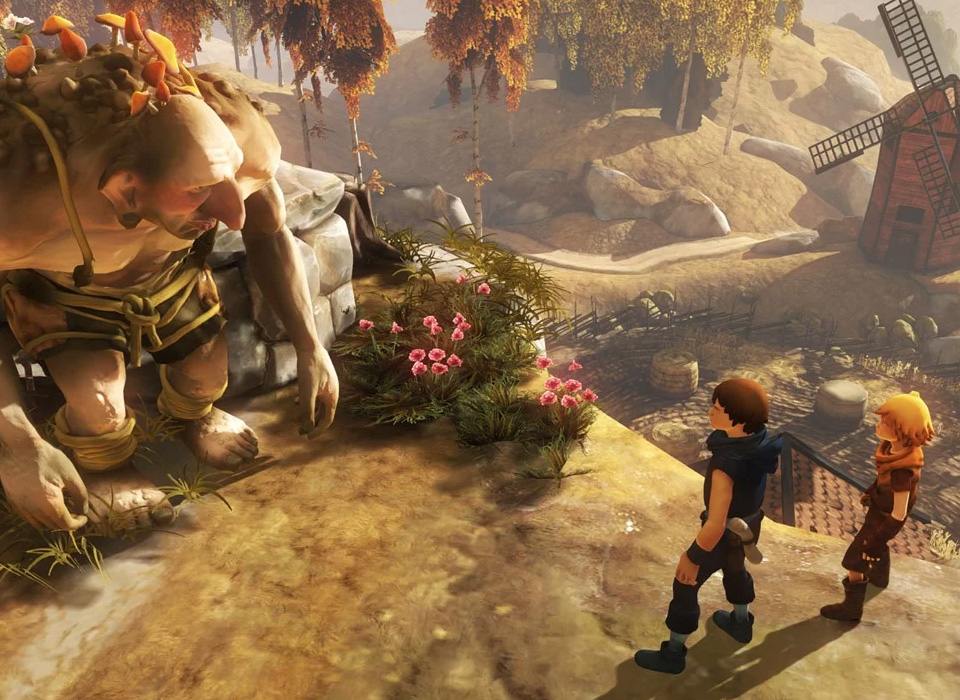
“Brothers: A Tale of Two Sons”
Being (future) mums ourselves, with gaming baby daddies to boot, it did make us re-evaluate the world of gaming and what it could mean to our kids. Let’s hope the media catches on and starts focussing more on the beautiful and meaningful games out there.
In the end, we came away from 2018 Semi Permanent a bit mind-blown by the talent in the creative industries (though not surprised) but also a bit wary of those who chose to only show their work. With such a large, curious audience, it seems a waste to use this platform to show a portfolio blow-by-blow. Trying to tie it in with a process driven narrative doesn’t make it better. The truth is when presenting to professionals that are all too familiar with the different design methods and approaches, we’re much more intrigued by those who take the opportunity to escape the routines and structures to surprise or provoke the audience to think differently.
We’ll still look forward to the next event and having our brains fried by the mass creative engine that is Semi Permanent.
Want to read more on creativity, design, product development and innovation? Go to our Six Lenses Blog.



Comments